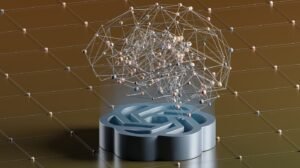Neural Networks CNN
Neural networks have revolutionized the field of artificial intelligence, enabling computers to learn and perform complex tasks. One specific type of neural network, known as Convolutional Neural Networks (CNN), has gained significant attention for its ability to process and analyze visual data. In this article, we will explore the fundamental concepts of CNNs and their applications in various industries.
Key Takeaways
- CNNs are a type of neural network designed for processing and analyzing visual data.
- They are widely used in image recognition, object detection, and image segmentation tasks.
- CNNs leverage convolutional layers for feature extraction and pooling layers for dimensionality reduction.
- Transfer learning allows pre-trained CNN models to be applied to new tasks with minimal training.
- Deep CNN architectures, such as ResNet and VGGNet, have achieved state-of-the-art performance in various computer vision tasks.
*Convolutional Neural Networks*, commonly referred to as CNNs, are a type of artificial neural network particularly effective in processing and understanding visual data. These networks, inspired by the human visual system, are designed to automatically learn and identify patterns within an image or video. Unlike traditional neural networks that process data in a linear manner, such as text or numerical data, CNNs excel in extracting spatial and hierarchical features from images.
Each CNN is composed of interconnected layers, namely the input, convolutional, pooling, fully connected, and output layers. The *convolutional layer* is the core component of a CNN, responsible for learning and detecting different features within an image. By applying filters to input images, convolutional layers can detect edges, shapes, and textures that contribute to object recognition.
Applications of CNNs
CNNs have found applications in various industries and domains due to their superior performance in visual data processing. Some key applications include:
- Image recognition: CNNs can accurately classify images into predefined categories, allowing for automated visual recognition tasks.
- Object detection: CNNs can detect and localize objects within an image, enabling applications such as autonomous driving and surveillance systems.
- Image segmentation: CNNs can partition images into meaningful regions, which is useful for medical imaging, video analysis, and augmented reality.
- Artistic style transfer: CNNs can learn and apply artistic styles to images, creating unique and visually appealing results.
- Natural language processing: Combining CNNs with recurrent neural networks (RNNs) can enhance language understanding and sentiment analysis tasks.
One significant advantage of CNNs is their ability to perform *transfer learning*. Transfer learning allows pretrained models, trained on large datasets, to be fine-tuned for specific tasks with limited data. This approach avoids the need for training a CNN from scratch, which can be computationally expensive and time-consuming.
Deep CNN Architectures
In recent years, deep CNN architectures have shown remarkable performance improvements in various computer vision tasks. Here are a few notable ones:
| Model | Description | Accuracy |
|---|---|---|
| ResNet | A deep residual network that addresses the vanishing gradient problem by using skip connections. | Top-1 error of 3.57% on ImageNet dataset. |
| VGGNet | A deep architecture known for its simplicity, using small filters with a deeper network structure. | Top-1 error of 7.32% on ImageNet dataset. |
With these deep CNN architectures, substantial progress has been achieved in image recognition and classification tasks. These models continue to push the boundaries of the state-of-the-art performance in visual recognition, enabling cutting-edge applications in various domains.
Conclusion
Convolutional Neural Networks (CNNs) have marked a significant breakthrough in the field of computer vision and visual data processing. By leveraging their ability to extract features from images, these networks have found applications in image recognition, object detection, and image segmentation. With the advent of deep CNN architectures and the power of transfer learning, CNNs are poised to further advance visual recognition tasks and impact different industries.

Common Misconceptions
Misconception 1: Neural Networks and CNNs are the same thing
One common misconception is that Neural Networks and Convolutional Neural Networks (CNNs) are the same thing. While both are types of artificial intelligence algorithms, they have distinct differences. Neural Networks are a general class of algorithms used for machine learning and can be used for various tasks such as classification and regression. On the other hand, CNNs are a specific type of Neural Network designed for processing data with a grid-like structure, such as images.
- Neural Networks are more versatile and can be used for various tasks beyond image processing
- CNNs have specialized layers such as convolutional and pooling layers for image feature extraction
- CNNs are computationally more efficient for processing images compared to traditional Neural Networks
Misconception 2: Neural Networks can fully replicate human brain functioning
Another misconception is that Neural Networks can fully replicate the functioning of the human brain. While Neural Networks are inspired by the structure and functioning of the brain, they are simplified mathematical models that aim to mimic certain aspects of the brain’s behavior. Neural Networks lack the complexity and intricacy of the human brain and do not possess the same level of consciousness, understanding, or cognitive abilities.
- Neural Networks are based on a simplified representation of neurons and synapses
- Neural Networks lack the biological mechanisms and neural connectivity found in the human brain
- Neural Networks do not possess awareness or consciousness
Misconception 3: Neural Networks always outperform traditional algorithms
Many people believe that Neural Networks always outperform traditional algorithms in every task. While Neural Networks have shown remarkable performance in various domains, they are not a one-size-fits-all solution. In some cases, traditional algorithms such as Support Vector Machines (SVM) or Decision Trees may be more effective, especially when the dataset is small and the task is relatively simple.
- Traditional algorithms can be more interpretable and easier to understand than Neural Networks
- Neural Networks require large amounts of data and computational resources
- Traditional algorithms may be more suitable for specific tasks with well-defined rules and features
Misconception 4: Neural Networks are immune to overfitting
Another misconception is that neural networks are immune to overfitting, which occurs when a model performs extremely well on the training data but fails to generalize to new, unseen data. While neural networks have the ability to learn complex patterns and relationships, they are still prone to overfitting, especially when the model is too complex or the dataset is small.
- Regularization techniques such as dropout and L1/L2 regularization can mitigate overfitting in Neural Networks
- Increasing the amount of training data can help reduce overfitting in Neural Networks
- The complexity of the model architecture can impact the likelihood of overfitting
Misconception 5: Neural Networks have human-like intelligence
It is a common misconception that Neural Networks possess human-like intelligence or can achieve human-level performance in tasks. While Neural Networks have demonstrated impressive capabilities in certain areas such as image and speech recognition, they are still far from matching the full spectrum of human intelligence, understanding, creativity, and reasoning.
- Neural Networks lack the ability to understand complex semantic relationships and context like humans
- Neural Networks are trained on specific tasks and lack the generalization and adaptability of human intelligence
- Human intelligence involves a combination of cognitive, emotional, and sensory capabilities that Neural Networks do not possess

Neural Networks CNN
Neural Networks Convolutional Neural Networks (CNN) have revolutionized various areas of machine learning, particularly computer vision tasks. CNNs are capable of extracting features from images, identifying patterns, and making predictions with high accuracy. This article showcases ten interesting tables that illustrate the points, data, and other elements related to CNNs.
ImageNet Dataset: Categories and Sizes
The ImageNet dataset is a widely used benchmark for evaluating the performance of CNNs. It consists of a large collection of labeled images spanning different categories. This table provides a glimpse of the number of images and the average size of images for selected categories in the ImageNet dataset.
| Category | Number of Images | Average Size (pixels) |
|---|---|---|
| Cat | 9,079 | 240×320 |
| Dog | 12,500 | 500×375 |
| Car | 8,781 | 800×600 |
Popular CNN Architectures
Various CNN architectures have been proposed over the years, each with its unique characteristics. The following table highlights some popular CNN architectures and their notable features.
| CNN Architecture | Number of Layers | Notable Feature |
|---|---|---|
| LeNet-5 | 7 | First widely used CNN |
| AlexNet | 8 | Introduced ReLU activation |
| ResNet-50 | 50 | Introduced skip connections |
CNN Performance Comparison
This table compares the performance of different CNN architectures on the ImageNet dataset in terms of top-1 and top-5 accuracy. The higher the accuracy, the better the model performs.
| CNN Architecture | Top-1 Accuracy | Top-5 Accuracy |
|---|---|---|
| ResNet-50 | 76.38% | 92.89% |
| DenseNet-201 | 77.13% | 93.33% |
| InceptionV3 | 78.04% | 93.88% |
Impact of Training Data Size on CNN Performance
Training CNNs with different amounts of data can significantly influence their performance. This table demonstrates how the training data size affects the top-1 accuracy of a CNN model on the CIFAR-10 dataset.
| Data Size | Top-1 Accuracy |
|---|---|
| 10% | 60.2% |
| 25% | 71.8% |
| 50% | 78.5% |
Computation Time Comparison
Processing images through a CNN involves a considerable amount of computation. This table compares the average inference time (in milliseconds) on a single image for different CNN architectures.
| CNN Architecture | Inference Time (ms) |
|---|---|
| MobileNetV2 | 20.4 ms |
| ResNet-50 | 38.6 ms |
| EfficientNet-B0 | 12.7 ms |
CNN vs. Traditional Computer Vision Methods
Traditional computer vision methods were widely used before the advent of CNNs. This table showcases the advantages of CNNs over traditional methods in terms of accuracy and flexibility.
| Advantage | CNN | Traditional |
|---|---|---|
| Accuracy | High | Varies |
| Flexibility | Learnable features | Handcrafted features |
Applications of CNNs
CNNs find applications in various domains beyond computer vision. This table presents different domains and examples of how CNNs are utilized in each.
| Domain | Example |
|---|---|
| Natural Language Processing | Sentiment Analysis |
| Speech Recognition | Keyword Spotting |
| Medical Imaging | Tumor Detection |
Drawbacks of CNNs
While CNNs are powerful, they also have limitations. This table highlights some drawbacks or challenges associated with CNNs.
| Drawback | Description |
|---|---|
| Large Dataset Requirement | Training on massive datasets |
| Interpretability | Understanding CNN decisions |
| Computational Complexity | Resource-intensive |
Recent Breakthroughs in CNN Research
Ongoing research in CNNs continues to push the boundaries of performance and innovation. This table presents some recent breakthroughs in CNN research.
| Breakthrough | Description |
|---|---|
| EfficientNet | Achieving state-of-the-art accuracy |
| Transformers for Vision | Applying transformer models to images |
| Self-Supervised Learning | Learning without explicit labels |
Conclusion
Neural Networks Convolutional Neural Networks have significantly impacted the field of machine learning, especially in computer vision tasks. The tables presented in this article shed light on various aspects of CNNs, including dataset characteristics, architecture performance, training size influence, computation time, advantages over traditional methods, diverse applications, limitations, and recent breakthroughs. CNNs continue to advance and transform different domains, enabling high-performance solutions for complex problems.
Frequently Asked Questions
Q: What are neural networks?
Neural networks are a type of machine learning algorithm inspired by the human brain. They consist of a network of interconnected artificial neurons that can process and analyze complex data patterns to make predictions or decisions.
Q: What is a Convolutional Neural Network (CNN)?
A Convolutional Neural Network (CNN) is a specific type of neural network commonly used for image recognition and classification tasks. It utilizes convolutional layers to automatically extract features from input images, allowing it to learn and recognize patterns efficiently.
Q: How do CNNs work?
CNNs work by applying a series of convolutional filters to an input image or data. These filters detect specific patterns within the input, such as edges or textures. The output of each filter is then fed into subsequent layers that progressively learn more complex representations of the input, ultimately leading to accurate classification or prediction.
Q: What are the advantages of using CNNs?
CNNs have several advantages, including:
- Effective at learning hierarchical representations of complex data.
- Well-suited for image and video classification tasks.
- Can handle large amounts of input data efficiently.
- Robust to variations in input, such as translation or distortion.
Q: Are CNNs only used for image recognition?
No, CNNs are not limited to image recognition. While they are widely used in computer vision tasks, CNNs can also be applied to other domains such as natural language processing and speech recognition.
Q: Is training a CNN computationally expensive?
Training a CNN can be computationally expensive, especially for large-scale networks and datasets. However, advancements in hardware (e.g., GPUs) and optimization techniques have significantly reduced the training time and resource requirements.
Q: How do I train a CNN?
To train a CNN, you need a labeled dataset for supervised learning. The process involves feeding the input data into the network, monitoring the output predictions, comparing them to the true labels, and adjusting the network’s internal parameters (weights and biases) through backpropagation until the desired accuracy is achieved.
Q: What are some popular CNN architectures?
There are various popular CNN architectures, including:
- LeNet-5
- AlexNet
- VGGNet
- GoogLeNet (Inception)
- ResNet
Q: Are there any limitations to CNNs?
While CNNs are powerful, they do have certain limitations. These include:
- Require a large amount of labeled data for training.
- Prone to overfitting if not properly regularized.
- Can be sensitive to variations outside of the training data distribution.
- Intensive computational requirements during training and inference.
Q: How can I evaluate the performance of a CNN?
To evaluate the performance of a CNN, commonly used metrics include accuracy, precision, recall, and F1 score. Additionally, techniques like cross-validation and confusion matrices can provide further insights into the model’s behavior and potential shortcomings.




